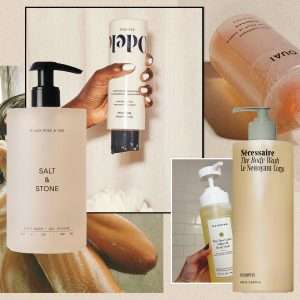Assessing the Damage
Before you start‚ it’s crucial to properly assess the damage. Is it a small rust hole? Or a larger dent with a hole? The size and location of the hole will determine the best approach. A thorough inspection is key. This will help you choose the right materials and techniques. Ignoring this step can lead to future problems. Small holes are easier to fix. Larger holes require more extensive repairs.
Gathering Your Supplies
Having the right tools and materials is essential for a successful repair. You’ll need:
- Safety glasses
- Gloves
- Sandpaper (various grits)
- Body filler (Bondo or similar)
- Body filler spreader
- Metal mesh (for larger holes)
- Rust converter (if needed)
- Primer
- Paint (matching your car’s color)
- Clear coat
Make sure you have everything before you begin. This will save you time and frustration. Good preparation is half the battle. Don’t skimp on quality materials. Cheap materials can lead to poor results.
Preparing the Area
Proper preparation is key to a long-lasting repair. Start by cleaning the area around the hole. Remove any rust‚ dirt‚ or loose paint. Use sandpaper to rough up the surface. This will help the body filler adhere properly. A clean surface is crucial. Rust converter can be applied if rust is present. Follow the manufacturer’s instructions carefully. This step is often overlooked. But it’s very important.
Filling the Hole
Now it’s time to fill the hole. For small holes‚ apply body filler directly to the area. For larger holes‚ use metal mesh as a backing. Mix the body filler according to the manufacturer’s instructions. Apply it in thin layers. Allow each layer to dry completely before applying the next. This prevents cracking and shrinking. Patience is key here. Don’t rush the process. Multiple thin layers are better than one thick layer.
Using Metal Mesh (for larger holes)
Cut the metal mesh slightly larger than the hole. Secure it to the back of the hole using tape or adhesive. This provides a solid base for the body filler. The mesh should be firmly attached. This will prevent the filler from falling through. It’s a simple but effective technique.
Sanding and Shaping
Once the body filler is completely dry‚ it’s time to sand it down. Start with a coarse grit sandpaper (e.g.‚ 80 grit). Gradually move to finer grits (e.g.‚ 120‚ 220‚ 320 grit). Sand until the filler is flush with the surrounding surface. Take your time and be careful not to sand too much. A smooth‚ even surface is the goal. This step requires patience and attention to detail. Check your work frequently.
Priming and Painting
After sanding‚ apply a coat of primer. This will help the paint adhere properly and protect the metal from rust. Let the primer dry completely. Then‚ apply several thin coats of paint‚ matching your car’s color. Allow each coat to dry before applying the next. Finally‚ apply a clear coat to protect the paint and give it a glossy finish. Proper painting is crucial for a professional-looking repair. Use high-quality paint for best results. Follow the manufacturer’s instructions carefully.
FAQ (Frequently Asked Questions)
Q: How long does it take for body filler to dry?
A: Drying time varies depending on the type of body filler and the temperature. Generally‚ it takes 20-30 minutes to become sandable. Always check the manufacturer’s instructions.
Q: Can I use body filler on plastic?
A: No‚ regular body filler is not designed for plastic. Use a specialized plastic filler instead. These fillers are more flexible and adhere better to plastic surfaces.
Q: What if I don’t have the exact paint color for my car?
A: You can take a sample of your car’s paint to an auto paint store. They can match the color and create a custom paint mix for you. This is the best way to ensure a perfect match.
Q: How do I prevent rust from coming back?
A: Thoroughly remove all rust before applying body filler. Use a rust converter to neutralize any remaining rust. Apply a good quality primer and paint to protect the metal from moisture. Regularly wash and wax your car to prevent rust from forming.
Final Touches and Inspection
Once the clear coat is dry‚ inspect your repair carefully. Look for any imperfections‚ such as unevenness or paint runs. If you find any‚ you can lightly sand them down and apply another coat of clear coat. Polishing the repaired area can also help blend it seamlessly with the surrounding paint. A keen eye is important. Don’t be afraid to redo a section if needed. Perfection takes time and effort. This is the final step. Make it count.
Alternative Repair Methods
While body filler is a common solution‚ there are alternative methods for filling holes in a car body. These include:
- Welding: For larger holes or structural repairs‚ welding is a strong and durable option. However‚ it requires specialized equipment and skills.
- Panel Bonding Adhesives: These adhesives can be used to bond new metal patches over holes. They offer good strength and corrosion resistance.
- Fiberglass Repair Kits: Suitable for repairing fiberglass body panels‚ these kits involve applying layers of fiberglass cloth and resin.
The best method depends on the size‚ location‚ and severity of the damage. Consider your skill level and available resources when choosing a repair method. Research each method thoroughly before starting. Safety is paramount‚ especially when welding.
Preventing Future Damage
After repairing the hole‚ take steps to prevent future damage. This includes:
- Regularly washing and waxing your car.
- Promptly addressing any signs of rust.
- Avoiding driving on gravel roads or in areas with road salt.
- Applying a protective coating to vulnerable areas.
Prevention is always better than cure. Taking care of your car will help it last longer and maintain its value. A little maintenance goes a long way. Protect your investment.
When to Seek Professional Help
While it’s possible to fill a hole in a car body yourself‚ there are times when it’s best to seek professional help. This includes:
- Large or complex damage.
- Structural damage.
- If you’re not comfortable with the repair process.
- If you lack the necessary tools or skills.
A professional body shop has the expertise and equipment to handle even the most challenging repairs. They can ensure a high-quality repair that will last for years to come. Don’t hesitate to seek professional help if you’re unsure. It’s better to be safe than sorry. Your car’s safety and value are worth it.





